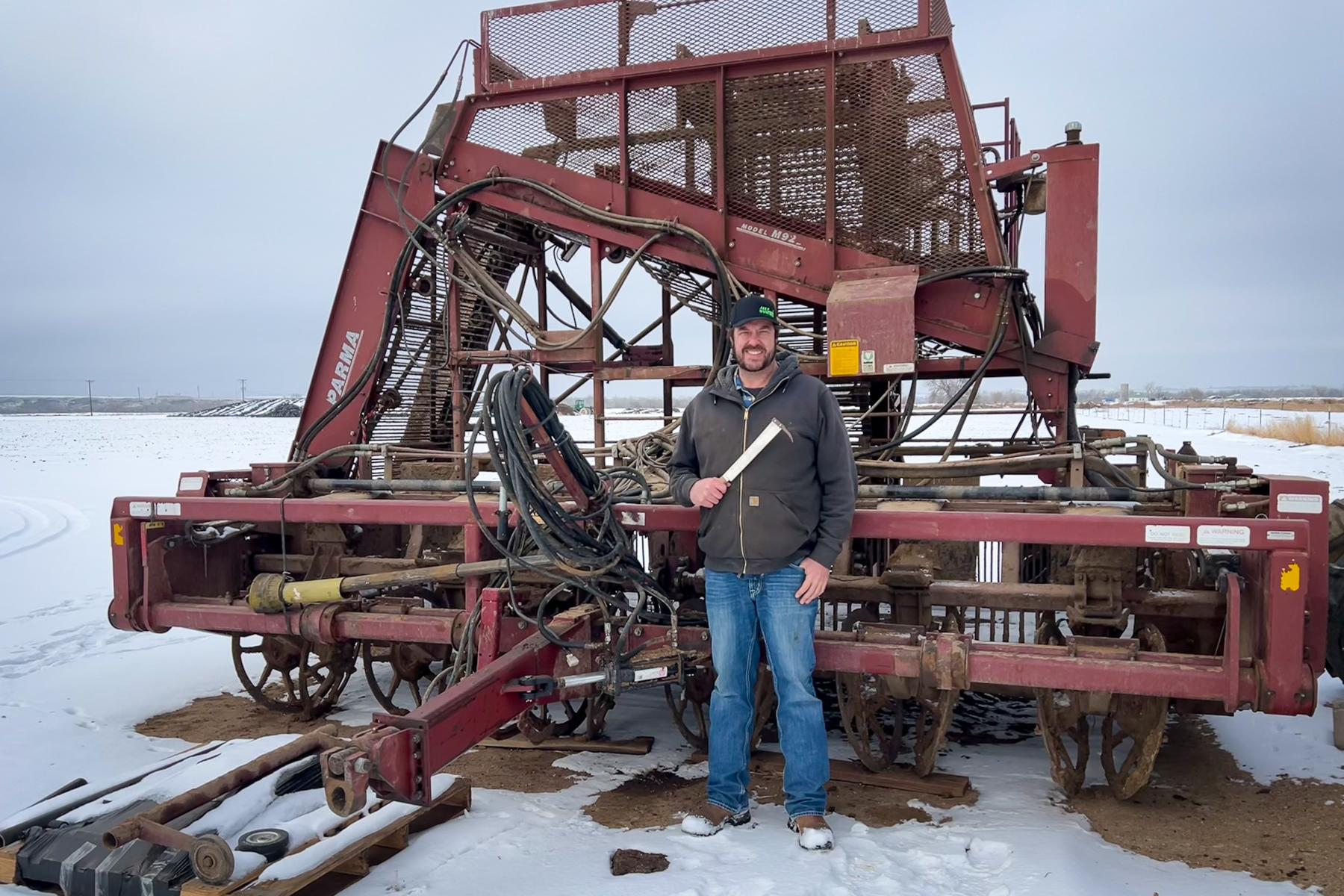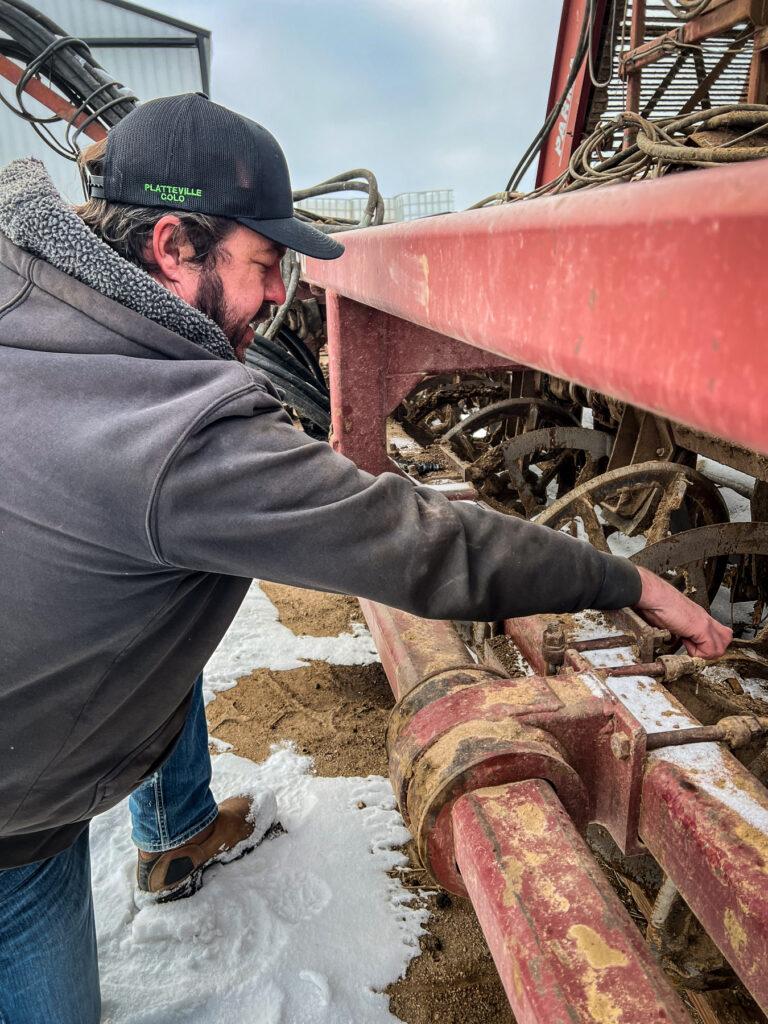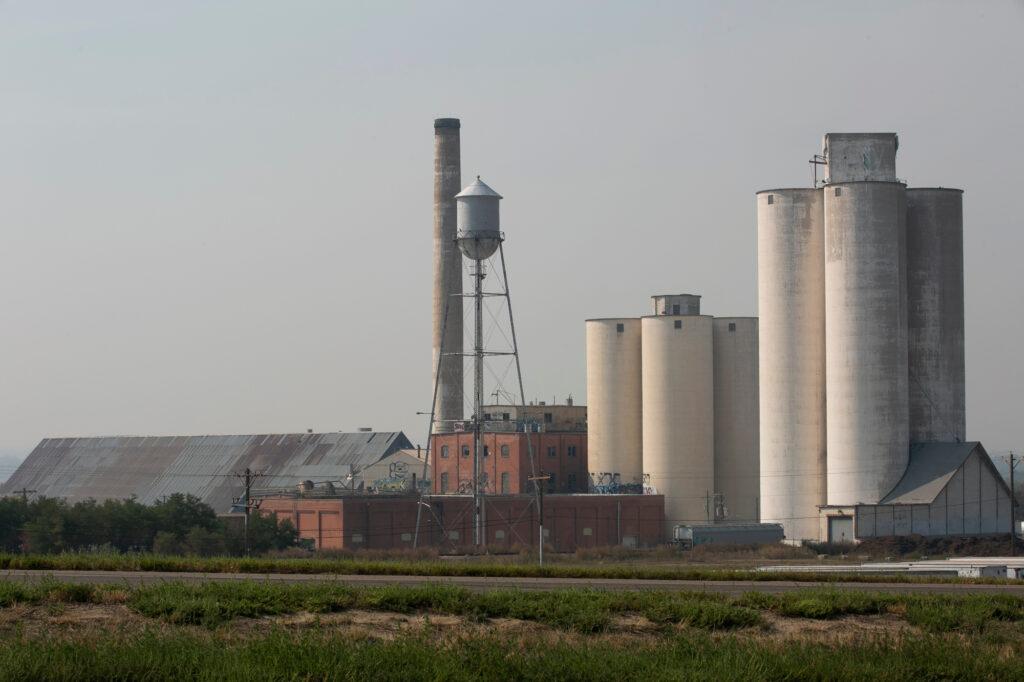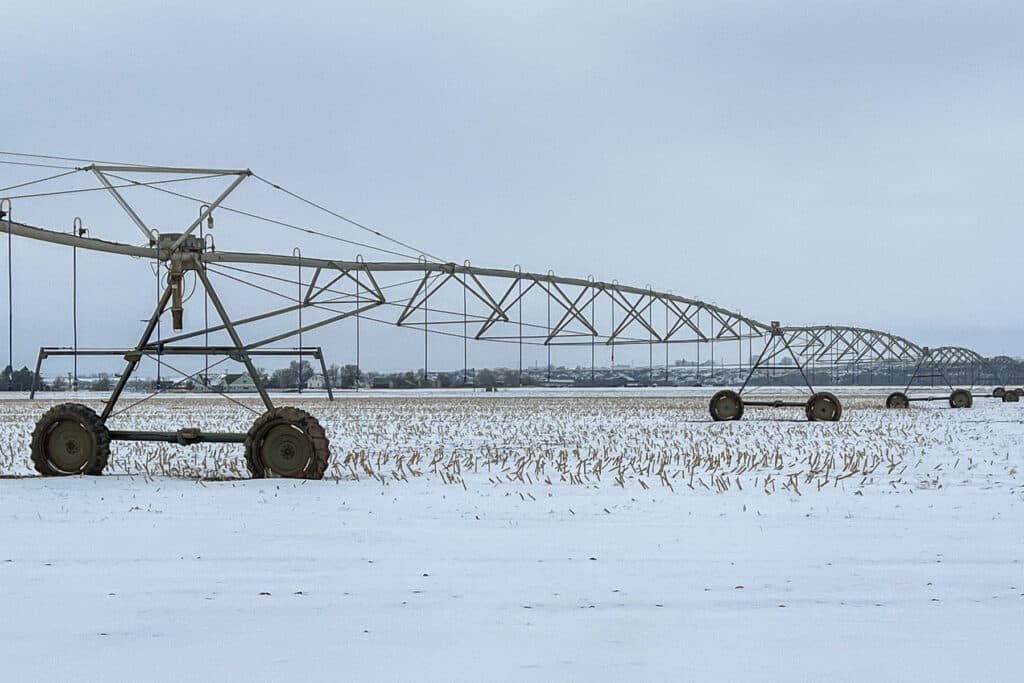
A root vegetable that was once the biggest crop in Colorado is now something many Coloradans have never even seen. Yet for most of us, Colorado-grown sugar beet is still a frequent part of our diets.
As part of CPR’s Colorado Wonders series, Madelyn Percy in Denver asked, “There used to be a really important sugar beet industry in Colorado. What happened to that industry, and could it come back?”
Erik Frank is a fourth-generation sugar beet farmer at A & E Frank Farms in Platteville, one of about 200 producers who still grow them in northeastern Colorado.
“Our heritage is Germans from Russia,” he explained about his great-grandparents who immigrated to Colorado as the industry was growing. “They first started working in the sugar beet fields and then started farming on their own around the Loveland area.”
Colorado’s first major cash crop
According to History Colorado, the sugar beet industry helped diversify Colorado’s economy in the early 1900s. Prior to then, the state’s economy had been dependent on ranching and mining.
Near the turn of the century, investors, including the mining millionaire Charles Boettcher, discovered that European-grown sugar beets could grow well in Colorado’s climate. Starting in 1899, Boettcher’s Great Western Sugar Company and other sugar companies built more than 20 sugar refining factories across the state. Sugar beets became Colorado’s first cash crop.
Growing sugar beets was labor intensive. The sugar companies brought in thousands of workers, including many German Russians who had experience working with the beet crops in their native Germany. Other field and factory workers in those early decades included Native Americans, Japanese Americans, and many Mexicans and Latino Americans.
In the 1950s, the sugar beet industry began to decline because of increasing competition from imported cane sugar, among other factors. The once-mighty Great Western Sugar Company filed for bankruptcy in 1985. Only one sugar refining factory is still operating in Colorado after being purchased in 2002 by a cooperative of remaining sugar beet farmers.
Growing sugar beets in the 21st century
Frank and the other Colorado farmers who still grow sugar beets typically make them the first crop in the ground in the spring, and the last crop that gets harvested, so the beets have enough time to become sweet.
That means the best time to harvest sugar beets in Colorado is typically in October when the weather has cooled but winter has not yet set in.
“Harvest is organized chaos,” Frank said. “It’s a race against time because, as you know, being in Colorado, October can be really nice weather or you could have 18 inches of snow. And when the ground freezes, you can't harvest the beets because it's frozen. You can't pull them out.”

Besides cooperation from Mother Nature, a good sugar beet crop also requires fertilizer, irrigation, and weed and pest control. Advances in machinery and seed genetics have helped Colorado beet farmers increase yields enough to stay profitable.
“Our growers are growing 35% more sugar per acreage than they did just 15 ago,” said Rebecca Larson, chief scientist for Western Sugar Cooperative, which manages the last sugar refinery in Colorado in the town of Fort Morgan.
In the winter months, that sugar factory operates 24-7 with more than 200 employees. Loads of sugar beets are hauled in from outdoor storage stations, then washed, sliced up, and turned into sugar juice.
“The sugar is boiled and crystallized and then ultimately put through a centrifuge. And the resulting product is the white granulated sugar that you would find on your grocery store shelves,” Larson said.
Colorado farmers now sell more than 300 million pounds of sugar each year.

Where to find Colorado sugar
Colorado-made sugar is sold in grocery stores as the GW brand or co-packed, which means it’s sold under store brand names. It’s also sold directly to food and drink manufacturers who buy sugar in large volumes.
“You’ll find our sugar in pasta sauces and popsicles, cereals, granola bars, energy drinks, all kinds of consumer packaged goods,” said Larson.
One buyer is a distillery in western Colorado.
“We’re putting 2,200 pounds of sugar in a batch,” said Max Vogelman of Stoneyard Distillery.

Stoneyard uses sugar to ferment as the base of its spirits. Vogelman said his company is intentional about buying sugar from Colorado farmers as a way to support the local industry. At its tasting rooms in Dotsero and Glenwood Springs, customers are often surprised to learn about Colorado sugar.
“A good chunk of the people that come through the door have no idea what a sugar beet even is. So it’s kind of entertaining to educate people on that,” said Vogelman.
One of the spirits the distillery sells is a rum-like product they simply call “sugar beet spirit,” because it can’t be officially classified as rum unless it's made with sugar cane.
Besides table sugar, sugar beets also provide a pulp byproduct used as cattle feed. Larson says there are a few people who will cook and eat a sugar beet, but she doesn’t recommend it.
“I don’t think they taste very good. It’s not something that you’ll ever find sitting on a grocery store shelf,” she said.
The future of sugar beets in Colorado
Colorado is one of 11 states that produce sugar beets, but we’re not among the top domestic producers. According to the USDA, 60% of sugar beet sugar in the United States is grown in Minnesota and North Dakota.
Although sugar beets are now a small crop in Colorado compared to hay, alfalfa, corn or wheat, one benefit of growing beets is a consistent price. Colorado beet farmers have a guaranteed allotment each year from the USDA which manages sugar policy, including imports.
Frank doesn’t expect the sugar beet industry in Colorado to grow significantly, but he does believe the industry here is stable. He hopes his 8-year-old son will have the option to become a 5th-generation sugar beet farmer. He believes that will largely depend on whether water remains available and affordable for Colorado farmers.
“The pressure of urban sprawl and the increased demand for our irrigation water to be used in municipal areas like cities, that puts a huge pressure on any ag industry, and especially sugar beet production because beets require irrigation water to thrive.”








